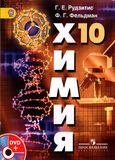Упр.7 Appendix 1 Биология ГДЗ Enjoy English 10 класс
7 Решите, где на картинке выше, должен быть помечен четвертый элемент из упражнения выше. Прочитайте вторую часть статьи и выясните, правы вы или нет.
С 1950-ых годов цитобиология сосредоточилась на ДНК и ее информационных особенностях. ДНК или диоксирибонуклическая кислота содержит генетическую информацию и отвечает за наследственность. Обычно ДНК не существует как единичная молекула, а представляет собой пару молекул, которые туго стянуты и формируют двойную спираль.
Молекула ДНК очень длинная. Если ее раскрутить, то она будет в длину приблизительно пять сантиметров! Удивительно, что эти огромные молекулы умно упакованы в крошечное ядро, которое можно обнаружить только в электронный микроскоп.
Молекула ДНК состоит из сегментов. Сегменты, которые хранят генетическую информацию, называют генами. Ученые все еще не уверены в числе генов, которые имеет каждый человек — их числа изменяются от 20 000 до 100 000! Когда новый организм рождается, он наследует гены от родителей. Эти гены определяют физические, физиологические и поведенческие особенности нового живого существа.
Те ученые, кто верит, что информация, хранившаяся в генах, может быть расшифрована, очень взволнованы взломом генетического кода. Это позволит людям знать то, каким будет будущий организм. Амбициозные ученые идут дальше - они имеют в виду не только предсказание, но и возможность изменения генетического кода в медицине, а также для других целей. Их план кажется и захватывающим и страшным. К чему генетические эксперименты могут привести нас?
Решение #
DNA should be marked in the nucleus
Приведем выдержку из задания из учебника Биболетова, Бабушис 10 класс, Дрофа:
7 Decide where in the picture the fourth element from the exercise above should be marked. Read the second part of the article and find out if you are right or not.
Since the 1950’s, cell biology has focused on DNA and its informational features. DNA or deoxyribonucleic acid contains the genetic information and is responsible for heredity. Normally DNA does not exist as a single molecule but a pair of molecules which are tightly wound and form a double spiral. The DNA molecule is very long — when unwound, it measures about five centimetres! Amazing, but these huge molecules are cleverly packed in a tiny nucleus, which can only be seen through an electronic microscope.
The DNA molecule consists of segments. The segments which store the genetic information are called genes. Scientists are still uncertain about the number of genes each person has — the numbers vary from 20,000 up to 100,000! When a new organism is coming into existence, it inherits genes from the parents. These genes determine the physical, physiological and behavioural characteristics of the new living being.
It’s believed that the information stored in genes can be decoded, and scientists are very enthusiastic about cracking the genetic code. It will enable people to know what the would-be organism is going to be like. Ambitious scientists go further -they mean not only prediction, but the possibility of altering the genetic code for medical or other purposes. Their plan sounds both exciting and scary. What will genetic experiments lead us to?
Популярные решебники 10 класс Все решебники
*размещая тексты в комментариях ниже, вы автоматически соглашаетесь с пользовательским соглашением





